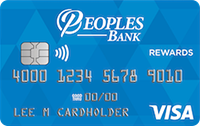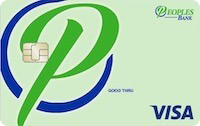Posted On: August 6, 2018 by Peoples Bank in: Cyber Security Security

Here’s how chip cards are better and more secure
Chip-enabled cards have been the norm for a few years now. Banks, credit unions and credit card companies have been using them since at least 2016. But there are still some misunderstandings of how the chips actually work, and how they provide greater security benefits than a magnetic strip.
Here’s how each payment method works, and how chips are a far superior way to pay.
Chip-enabled cards
The reason chip-enabled cards are harder to scam is that each transaction produces a unique result. The chip acts as a small computer and is smart enough to interact with a card reader in a different manner each time. Every transaction produces a different, one-time code with your payment account information, making it almost impossible for scammers to take the data and reproduce your card.
This also helps in the event of a security breach at a vendor you’ve used. For example, if a restaurant is hacked, the payment information in its system is a unique code, making it virtually impossible for the attacker to replicate.
Pair the built-in security with requiring a PIN at checkout to maximize security. PINs are much more difficult to crack than a signature, which the cashier never looks at.
Simply put: Chip-enabled cards are a more technologically advanced way to protect your payment information.
Magnetic strips
While not all magnetic strips have been done away with — they can still be used if a merchant doesn’t have a chip reader or at gas pumps, ATMs, etc. — they are becoming defunct. Because of the increased security chip-enabled cards provide, using magnetic strips is discouraged. But it does happen every so often.
Magnetic strips process transactions through static data, meaning it doesn’t change from purchase to purchase. So when a fraudster obtains your card’s data, they can reproduce your card without much trouble.
The number of credit card fraud reports has risen significantly in the last two years, and part of that can be blamed on something called card skimming. There was a 70 percent increase in the number of debit cards that were compromised in 2016 at ATMs and card readers used by merchants, according to the most recent data from credit scoring company FICO.
Skimmers buy cheap equipment, place it over credit card readers at ATMs and gas stations and can get your card information fairly easily through the magnetic strip. And skimming equipment can be as cheap as $100.
So when you can, use the chip on your card. It’s a safer way to complete a transaction.




